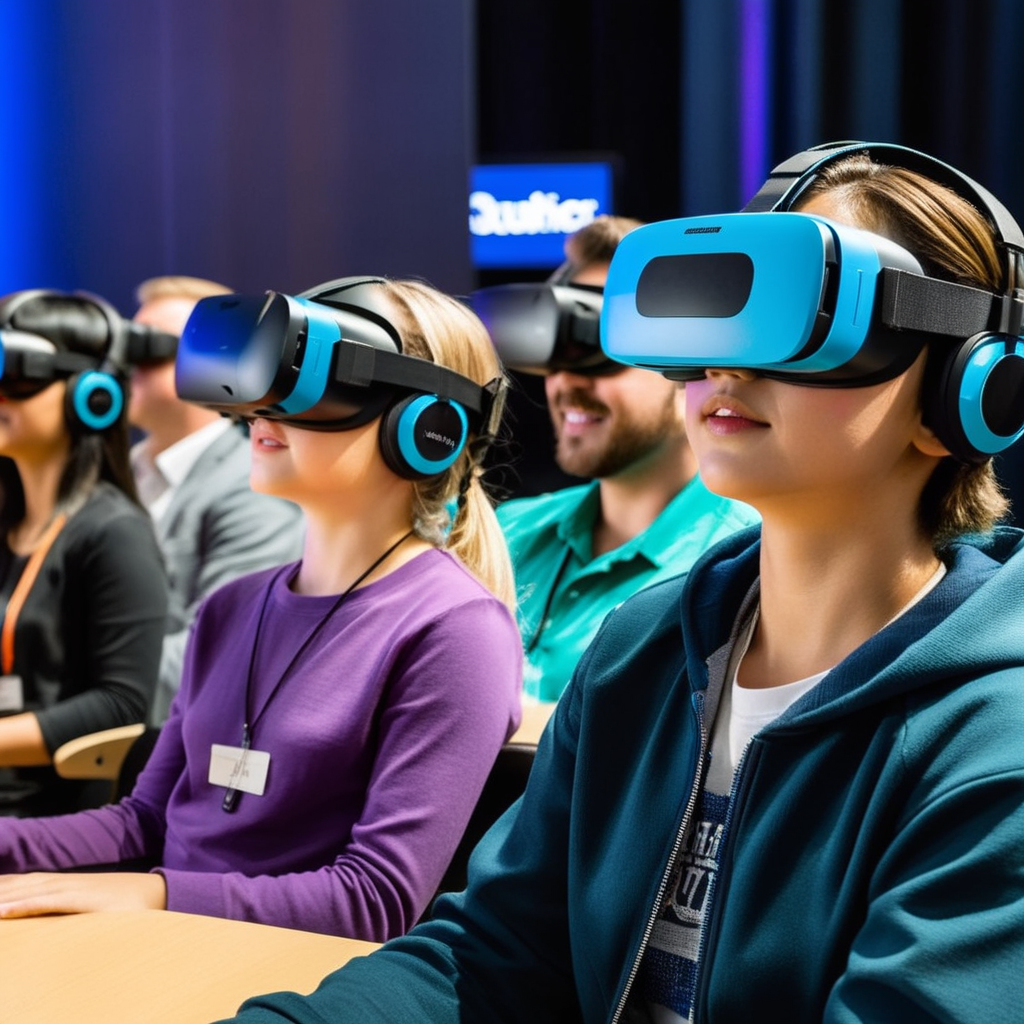The Role of Virtual Reality in Education
Entering the realm of virtual reality (VR) is like stepping into a portal that transcends the boundaries of traditional education. Having traversed this digital landscape, exploring the profound impact of virtual reality on education has been nothing short of a captivating odyssey. Join me as we uncover the transformative role that VR plays in reshaping the educational experience, woven together with personal anecdotes that illuminate the potential of this immersive technology.

A Glimpse into a Virtual Classroom
The First Virtual Encounter
My first journey into a virtual classroom was a revelation. Donning a VR headset, I found myself transported to historical landscapes, standing amidst ancient civilizations that leapt off the pages of textbooks. The ability to visualize and interact with historical events, rather than just reading about them, marked a paradigm shift in my understanding of the past. It was an educational epiphany that set the stage for the profound impact of VR.
Immersive Learning Environments
Beyond Textbooks and Screens
Virtual reality introduces a dimension of immersive learning that transcends conventional textbooks and screens. Personal anecdotes of exploring the human anatomy in 3D or dissecting virtual frogs in a biology class highlighted the potential of VR to transform abstract concepts into tangible experiences. The visceral nature of these encounters imprints knowledge in a way that textbooks alone cannot replicate.
Field Trips Beyond Borders
Exploring Without Leaving the Room
The constraints of traditional field trips dissolve in the virtual realm. Anecdotes of “visiting” the Louvre in Paris or the Great Wall of China from the comfort of my home underscore the power of VR in bringing global experiences to students. The ability to explore cultural landmarks and ecosystems without leaving the classroom not only broadens horizons but also addresses logistical challenges faced by schools.
Simulated Experiments and Practical Learning
Learning by Doing
One of the challenges in education has always been bridging the gap between theory and practice. Virtual reality steps into this breach by offering simulated experiments and hands-on learning experiences. My encounters with VR labs and workshops simulated scenarios where I could experiment with chemical reactions or engineer structures, providing a safe yet realistic environment for practical learning.
Tailored Learning Experiences
Personalized Educational Journeys
In the world of VR education, one size does not fit all. Personalized learning experiences, tailored to individual learning styles and paces, are a hallmark of VR. My experiences with adaptive VR modules that adjusted difficulty levels based on my progress highlighted the potential to cater to diverse learning needs, fostering a more inclusive and effective educational landscape.
Overcoming Distance with Virtual Collaboration
Breaking Down Geographic Barriers
The power of virtual reality extends beyond individual experiences to foster collaboration among students and educators worldwide. Personal anecdotes of participating in virtual study groups with peers from different continents demonstrated the potential for VR to break down geographic barriers. The sense of shared presence in a virtual space enhances collaboration, turning education into a global, interconnected venture.
Building Empathy through Immersive Storytelling
Walking in Others’ Shoes
The impact of VR on education goes beyond subject matter mastery to instill empathy through immersive storytelling. Personal encounters with VR narratives that placed me in the shoes of historical figures or immersed me in diverse cultural experiences showcased the potential of VR to foster understanding and compassion. This experiential approach to education extends its influence into shaping well-rounded, empathetic individuals.
Challenges and the Road Ahead
Navigating Technological Frontiers
While the promises of VR in education are immense, challenges abound. Personal reflections on technical glitches and the need for reliable hardware underscore the importance of overcoming technological barriers. Additionally, concerns about access and equity raise questions about ensuring that the benefits of VR education reach all students, regardless of their socio-economic backgrounds.
The Future: Redefining Education
A New Chapter Unfolding
As we stand on the cusp of a new era in education, the role of virtual reality continues to evolve. Personal contemplations on the potential of VR in vocational training, professional development, and lifelong learning hint at a future where education extends far beyond traditional classrooms. The ongoing integration of VR into educational practices heralds a transformative chapter, redefining how we acquire knowledge and engage with the world around us.
Conclusion: A Virtual Odyssey Continues
Embarking on the exploration of virtual reality in education is akin to a perpetual odyssey with new discoveries around every corner. From immersive classrooms to global collaborations, VR is reshaping the landscape of education. As we navigate the challenges and embrace the opportunities, the potential for virtual reality to revolutionize the way we learn is an exciting prospect, promising a future where education knows no bounds.





